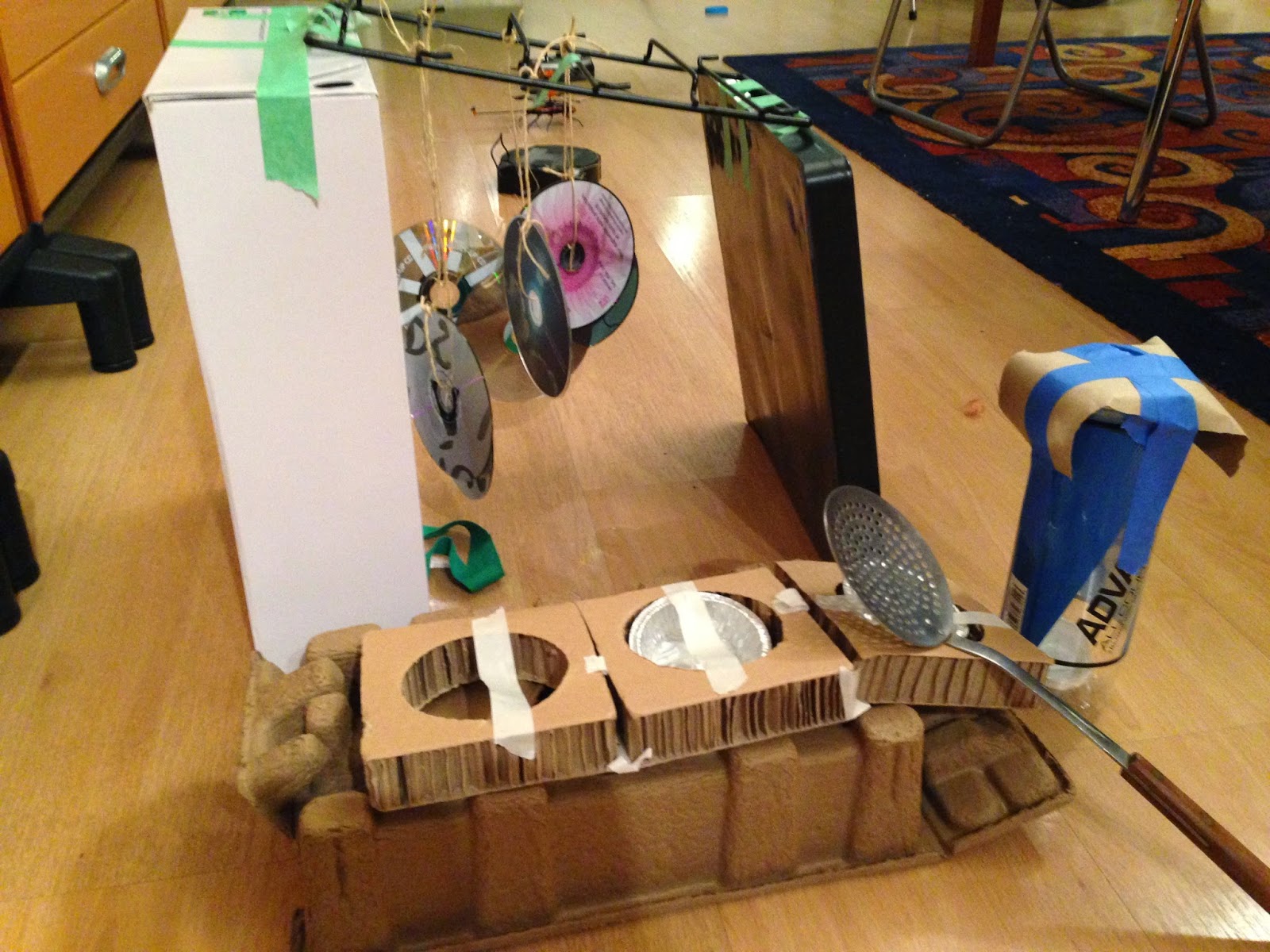In order to better understand the constraints of this task, we had a Q and A with guest participant: John Willis. John is an inclusive designer (meaning he designs with people of all abilities in mind) and is also blind himself. He talked to the kids about what sports are fun for him to play and what things he tries to avoid at all costs (fast moving balls, tall hard obstacles).
With these user constraints in mind, we brain-stormed to come up with a blended game. We had lots of ideas as a group. Elektra and Zachary thought of a flag capture game, where the wheelchair participant has five flags and two teams of non-sighted players try and find the flags, with directions from two sighted guides. We test played this for two rounds.
When users test a game it is really obvious what works and what needs improving. Overall the verdict was that this game was quite fun, but that:
- The flags need to stick out from the wheelchair all in one place (to avoid the crazy groping)
- There should be some way of limiting the amount of time a blind person can touch the chair (same reason as above). Maybe a ref is needed to enforce this?
- There needs to be a way to slow the wheelchair down -or maybe there should be multiple wheelchair participants (to "confuse it up" some more)
- The flags could be different textures for the two different teams
- There might be blind people with flags (should these guys also be able to get flags)?
- Our guest designer, John pointed out, that we might want to modify the game so that the blind participants have more autonomy i.e. they are experiencing the game through their own senses more.
Round one of prototyping done. Lots of great design modifications by our young inventors.









































